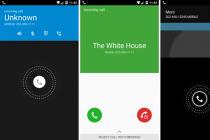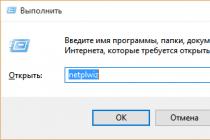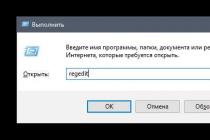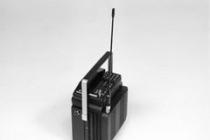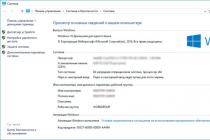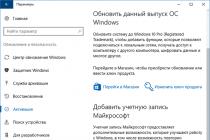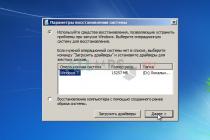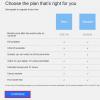MIUI has come a long 6-year journey from a simple fork of CyanogenMod to a full-fledged operating system - the title for Xiaomi smartphones and tablets. But it is also installed on tens of thousands of devices from other manufacturers. Many MIUI users find it more convenient and functional than the native firmware of their gadgets. Over the past couple of years, the system has become less relevant largely due to the development of stock Android and competitive skins. The operating system became "adult" by the fifth version, in MIUI v6 they radically changed the design of the graphical shell, made it flat. The seventh version brought little new and the update could be called rather minor, but MIUI 8 has greatly changed both externally and in terms of functionality.


Attention: when writing this review, the Anglo-Chinese firmware installed on the. The names of applications and settings items are given in English and Russian. The international (global) version of the firmware may slightly differ from the one given in the review by the interface and the set of applications.
Lock screen
By default, the device can be woken up with the Power button (optional with the volume rocker), double tap on the screen, or by opening the Smart Case. The latter option implies direct unlocking, in all other cases, after waking up, the gadget needs to be unlocked by swiping from bottom to top in any part of the screen. The system is able to prevent unintentional unlocking of the smartphone when it is in your pocket; for this, the proximity sensor above the screen is used. For security purposes, you can set a password to unlock in three ways: create a pattern, set a PIN or password. In parallel with the password, in those devices where the fingerprint sensor is installed, you can use your finger. In addition, you can configure unlocking using the MiBand bracelet, it will happen if the bracelet is in the immediate vicinity of a locked smartphone or tablet.




By default, the lock screen displays: status bar, clock, date and day of the week. Optionally, you can display information about the owner of the phone on the lock screen. If there are missed events, they are displayed as a list of cards. If you double tap on one of the cards, the user will go to the corresponding application.





With a swipe from the top edge, you can pull out the notification curtain, swipes from the left-right edges launch applications of the user's choice. By default, the launch of the Camera application is set to the swipe from the right edge.



Desktop and multitasking organization
In the operating system, the application menu, and the main workspace is the desktop, they are scrolled horizontally. The desktop can contain application icons and widgets. At the bottom of the desktop is the Dock, which can hold up to 5 shortcuts or folders.


One desktop in MIUI 8 can fit up to 20 application icons and widgets arranged in a 4 * 5 grid, the number of desktops is unlimited. Icons again installed applications appear on the last desktop in an empty space. Icons can be grouped into folders, a folder is created by simply dragging one icon onto another. The folder can contain an unlimited number of icons; inside the folder, scrolling is vertical.




Icons and widgets move around desktops with a simple drag and drop. The widget can be removed from the desktop by dragging it to the trash can at the top of the screen. If you try to do the same with the icon, the system will offer to remove the application from the system. The menu for managing desktop settings is called by pinching the fingers on the screen or holding the “Multitasking” button. The menu consists of four items: Sorting, Widgets, Wallpapers and Effects. When you select the first item, a screen opens where you can more convenient form sort application icons, move them from one table to another, and create folders. The second and third paragraphs allow you to add a widget or change the wallpaper. In the last menu item: Effects - you can choose one of the animation options for scrolling tables. In addition, you can add additional tables or remove unnecessary ones.




![]()
Multitasking in MIUI 8 has the same principles as in “bare” Android, and is not additionally regulated in any way. True, the system has a function for blocking the background activity of applications with two profiles: Off. - the system does not interfere with the background activity of applications; Incl. - the system, if possible, completely blocks the background activity of applications. It is possible to add individual applications to exclusions or select one of four control options for them: MIUIBattery Saver - the system will manage the background activity of the application at its discretion; No restrictions - has two sub-options, either the system will not interfere with the background activity of the application at all or will partially restrict access to geolocation services; Restrict background apps - the application will not be closed, but some background activity will be prohibited; Restrict background activity - the application will be unloaded from memory.





The multitasking button calls up the corresponding menu screen, at the bottom of which are displayed: the amount of free random access memory, just above the Clear memory button. A list is displayed above this all running applications, it scrolls horizontally and can be represented as icons or thumbnails, up to 4 icons or up to 3 thumbnails can be seen at the same time. Swiping on the icon from bottom to top closes the application, swiping from top to bottom calls two buttons, one of them sends to the settings window of this application, the second - blocks the application so that it does not unload when Clearing memory. Locking is very useful when you want to save the state of an application but need to clear up RAM.




Controls, keyboard
Smartphone control in MIUI 8 implies the presence of a power button, volume control buttons and three control buttons: Multitasking, Home and Back. For certain actions, swipes, long tapes and context menus are actively used. The built-in search in MIUI 8 is called not by holding the Home button, but by swiping from bottom to top anywhere on the desktop, obviously the idea was spied on in iOS7 +. For the international version of the firmware, the search is called by holding the Home button.

As in stock Android, MIUI has a notification curtain, which is combined with the toggle bar. On the desktop, the shutter can be pulled out with a swipe from top to bottom in any part of the screen, which is convenient, in applications, traditionally, by swiping down from the top edge of the screen. There are two modes of displaying information in the curtain, the default is Combined mode, when all switches are displayed in one scrolling row, and notifications are presented in the list below. Split mode has two screens: one screen with a list of missed events / notifications and a shortcut for notification settings; the second screen contains: 20 switches, a backlight adjustment slider and a Settings application shortcut. In both modes, the search bar, the current day of the week and the date are displayed at the top.
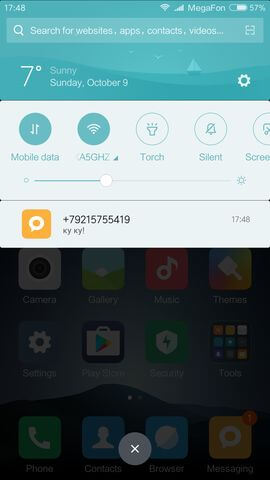


The native keyboard in MIUI 8, as I understand it, is missing for ubiquitous use. Instead, two third-party keyboards Sogou Keyboard for MIUI and Baidu IME for MIUI are preinstalled in the system, in global version firmware added keyboard from Google. In some situations, for example, when entering a password on the lock screen, a completely different keyboard appears, which looks more like a native one. The dial pad is comfortable, the buttons are large, there is a smart-dial.





Settings
In the application Settings can be accessed directly by clicking on the icon on the desktop or through the shortcut in the notification curtain. The application has only one screen, where all the settings are collected, divided into categories, which in turn are collected in five groups.


Among the innovations that immediately catch the eye, it is worth highlighting the search bar among the settings and the discolored section icons. Most of the categories and settings items coincide with those in stock Android, others can be discussed in more detail.
NETWORK / WIRELESS
SIM cards & mobile networks / Management SIM cards and mobile networks - in this section, you can configure the operation of SIM cards: enable data transfer, block data in roaming, set up defaults for calls and the Internet for SIM cards.


WLAN- contains a switch and Wi-Fi settings... Also here you can find a switch for the Switch between data and WLAN function, this function allows you to automatically switch to cellular data in case of poor quality or low Wi-Fi connection speed.



Bluetooth- contains a switch and Bluetooth settings.


Personal hotspot- the access point setting, which was earlier in the More section, was highlighted in a separate settings item.


More / More- placed in this section VPN settings, tethering and wireless monitor. The Airplane Mode switch is also located here.


PERSONAL / PERSONAL SETTINGS
Display- the section that contains the screen settings. Here you can adjust the brightness of the screen, set up the screen saver, auto-rotate, contrast, color balance and activate screen wake-up by double tap. Also in this section, the reading mode added to MIUI7 is configured, which can be activated both for the entire system and for individual applications. When activated, the screen backlight changes, the white fields turn yellowish. The manufacturer claims that in this mode the eyes get tired less. The settings for system fonts and text size have been moved to this section.





Wallpaper- in this section, you can change the wallpaper for the lock screen and desktop by choosing from the pre-installed ones or downloading from the store. MIUI 8 added new function- Wallpaper carousel, when activated, the wallpaper of the locked screen will automatically change at regular intervals. New wallpapers will be loaded from a special bank of pictures.




Themes- in this section you can set a theme by selecting from the list of available themes or downloading themes from the store.

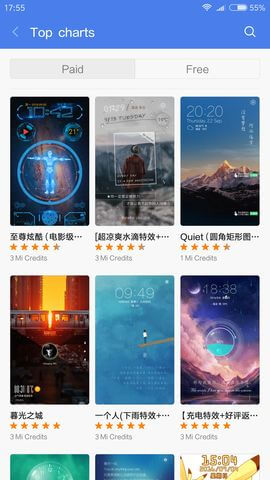
Sound & vibration / Sound and vibration- in this section you can adjust the sound volume separately for: notifications, alarm, conversation, multimedia and bluetooth. You can set ringtones for calls and notifications, set vibration for various events. In the subsection Audio settings, you can configure the action by pressing the buttons of the headset, there is an Equalizer and the Mi Sound sound adaptation system.



SYSTEM & DEVICE
Lock screen & password- you can use a pattern, password or PIN to lock your smartphone; in parallel with this, you can use the fingerprint scanner and the Mi Band bracelet. In this section, you can set the screen off delay, specify whether the screen will turn on when you receive notifications, and activate the function of preventing taps on the screen in your pocket. Here you can also specify information about the owner, they will be displayed on the lock screen. The system has implemented support for the so-called Smart covers which use magnets to block or unlock the device.




Notifications & status bar- in this section you can manage the list of applications from which the user wants to receive notifications. You can enable or disable the display of the operator's name in the status line, or set an arbitrary name, you can also enable the display of the current baud rate in the status line. It is possible to disable the notification shade on the lock screen or turn on the curtain collapse after pressing one of the switches, adjust the sequence of switches and select the type of battery indicator. Among other things, you can now choose the display mode in the curtain of notifications and switches - combined or divided.




Second space- The Second Space function allows you to create two independent workspaces, like two profiles, each of which will contain its own set of applications, security settings and design. This is intended to allow the user to separate work and personal space.
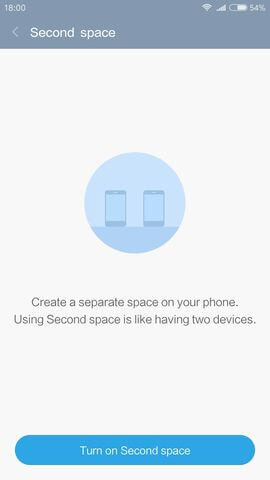
Do not disturb- this section is as much like the settings section of the same name in iOS. Here you can activate the "Do not disturb" mode, and calls / SMS will not go through. It is possible to configure the activation of the mode on a schedule, set exception numbers and activate the ability to call other subscribers on the second attempt.


Battery & perfomance- in addition to the standard Android detailing of battery consumption, in this section you can choose one of two power modes: Balanced or Performance. Additionally, to save battery power, you can turn off system animations. Here you can also find the settings for blocking background activity (see).


Storage- contains statistics of the used disk space with a breakdown by categories and a link to the memory cleaning utility.
Lite mode- in this section there is only one switch activating the mode of the same name. After its activation, a mandatory reboot follows. V simple mode The graphical interface of the desktop and main applications is simplified as much as possible, a maximum of 6 application or contact icons can be placed on one screen.






Additional settings- this is a very large section, which contains settings that did not fall into other groups and sections.
Additional settings> Date & time- standard for Android settings time, date and time zone.


Additional settings> Language & input- standard Android settings for the system language and keyboard.


Additional settings> Child mode / Advanced> Parental control the mode of the same name, in which you can restrict access to certain applications, as well as prohibit sending SMS to any applications. Exit from this mode possible only after entering the password.


Additional settings> Privacy- this section contains settings that allow you to protect personal information from prying eyes. Encrypt phone - allows you to encrypt all data on your phone. In addition, this section contains settings for certificates, administration, access to geolocation and others.



Additional settings> Quick ball- Quick ball settings - a small round translucent icon very much reminiscent of AssistiveTouch in iOS, on which you can hang several basic functions.


Additional settings> Notification light / Additional> Indication- here you can enable / disable the indicator of missed events and assign your own indication color for each of the three notification options: missed events, missed calls and missed messages.


Additional settings> Headphones & audio effects / Additional> Headset- this section completely duplicates the Audio settings subsection from the Sound and vibration section.


Additional settings> Buttons- here, for each of the three touch buttons, you can hang one of the functions for a long tap: Recent applications, Start Assistant, Close current application and Show menu. It is possible to set the backlight interval for the touch buttons or turn off the backlight altogether.


Additional settings> One-handed mode- here you can activate one-handed operation and select the equivalent of a reduced screen from several options: 3.5 / 4 / 4.5 inches. The mode itself is activated by a swipe from touch button Home to Back or Multitasking buttons.

Additional settings> Accessibility / Advanced> Special Features – standard Android settings for people with disabilities.

Additional settings> Developer options- standard Android developer settings. In order for this section to appear in the settings, you need to tap the MIUI version line several times in a row in the About phone section.

Additional settings> Backup & reset / Advanced> Recovery and reset - in addition to the sometimes necessary item Reset settings in this section, you can control the function Reserve copy phone and application settings both via Google service and using a local backup.


Additional settings> Mi Mover / Advanced> Mi Transfer- a function that allows you to transfer contacts, call history, messages, desktop view, applications, settings and other data from / to another smartphone.

ACCOUNTS
Mi Account- Mi account settings. Here you can see the contents of the Mi Cloud and the list of linked devices and accounts.


Other accounts- this section allows you to manage all accounts entered into the device.

Sync / Synchronization- here you can enable / disable automatic synchronization of accounts or disable auto-synchronization via the mobile network.
APP SETTINGS
System apps- built-in application settings

Mi Cloud- this section contains settings for synchronization with cloud storage Mi Cloud. Here you can configure what exactly should be synchronized and view the statistics of the used space.

Call settings- this section contains settings for the Phone application. In subsection Call recording you can set up automatic recording from the line and specify the calls from which numbers you need to write. Also in this section you can configure: auto answer, smart search numbers, reminders of missed calls and more.


Contacts / Contacts- in this section you can activate Simple Mode displaying contacts when additional contact data will be hidden; import / export contacts to SIM memory; disable the display of contact photos.


Messaging / Messages- in this section you can activate Cloud Messages(analogue iMessage), set up message notifications and set up MMS.


Calendar / Calendar- calendar settings.


Mail / Mail- this section contains the settings of the built-in mail client.

Security- this section contains the settings of the Security application. Here you can connect a widget in the notification panel or place a shortcut on the desktop for one or all application components. It is possible to activate Clean up RAM when the device is locked.



Camera- this section contains settings for photo and video shooting.


Gallery- Gallery application settings.


Music / Music- settings for the Music application. Here you can configure the display filter sound files by size (default - 800KB) duration or by location.


Mi Video / Mi Video- it is possible to limit the download of video for cellular data.


Browser- system browser settings. There are a lot of settings, there is a built-in ad blocker.


Notes / Notes- very simple settings for the Notes application.


Recorder / Voice Recorder- Voice Recorder application settings - you can select the recording quality: high, standard and low.


Search- selection of applications by which the search will be carried out.
Assistant- voice assistant settings.


Scanner- Scanner application settings.
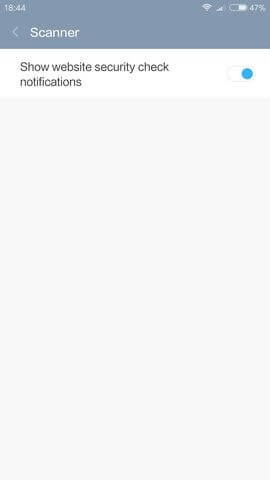
Virtual SIM / Virtual SIM- settings for a virtual SIM-card from Xiaomi, relevant only for residents of the Middle Kingdom.
Mi Credit



Games -

Installed apps

![]()
Dual apps- settings for a very interesting feature called Dual apps, which allows you to create a clone of an application for a second account. For example, you can sit in two Facebook accounts at once without having to log in each time.




Permissions- a shortcut to the utility of the same name that allows you to manage the boot list and application permissions (see).

App lock- the Guest Mode was dropped from the system, but instead they allowed the user to block access to any application or several applications at once. Unlocking is done using a pattern or a fingerprint.


About phone- information about the Android version is shown here, MIUI versions, iron. There is a system update button.

Basic applications
Application Phone / Phone, on the one hand, ascetic, on the other hand, it has all the necessary functions. The main screen is divided into three tabs (for the international version only two tabs): Recents / Calls - last activity, Contacts / Contacts and Yellow pages / Directory. The Calls tab displays a list of calls with filtering capabilities and a dialer. The dialer has a smart-dial, it works only with the Latin alphabet and numbers. Contacts from top to bottom display: contact groups, favorites and the contacts themselves; this tab has its own icon on the desktop. By default, contact photos are not displayed, but this can be enabled in the settings.






Application screen Messaging / Messages displays a list of dialogs and a search string. The interface of the dialog box is simple: in the upper right corner there are two buttons: call a contact and a contact card. Above the keyboard are located: the field for typing the current message, the button for sending a message and the + button, the latter allows you to add to the message: message template, emoticon, contact, picture, video, etc. A long tap on the message brings up the context menu, through which you can delete the message, forward it, copy the message text, view its detailed information or send it to favorites.






Application Mail / Mail can work with various mail delivery protocols, including IMAP. I liked the swiping system in the mail list. Swiping from left to right marks cyclically changes the mark of being read (read / unread), swiping from right to left brings up two buttons: delete and add to favorites.





Browser its interface resembles the Chinese UC Browser. On the start screen, there are selected sites, on the second screen, a list of popular services divided into categories. The search bar is combined with the address bar, there is a built-in QRcode-reader for quick input site addresses. In general, the interface seemed to me convenient and thoughtful, and in my opinion it is more pleasant than Chrome's.




Application Clock includes: alarm clock, world clock, stopwatch and timer. The alarm can be set to sound even if the device is turned off.





Camera- the main screen of the Photo mode contains 8 buttons: flash control, control HDR mode, filters, a button that calls up a screen for selecting shooting modes, a button to switch to front camera, Gallery, Shutter Button and Switch to Video Capture. Focus is set automatically or by tap. In the second case, pressing the focus area again takes a photo; by sliding up and down to the right of the focus indicator, you can adjust the exposure. We got rid of swipes in the updated interface completely. Absolutely in all devices of the manufacturer there is a mode of manual control of the parameters of photography, but in budget smartphones only white balance and ISO can be adjusted in it. For video shooting, there are two additional modes: fast motion (time lapse) and slow motion.


![]()



Calendar / Calendar- there are three views: Month, Week and Day. You can add events and reminders to them.



In the application Gallery there are two tabs: Photos / All - analogue of a photographic film in iOS, absolutely all photos taken with the phone camera are collected here; and Albums / Albums where everything else has been moved. The app can automatically sync all photos and videos to the cloud and detect faces in the photo. The system added Photo Editor and Video Editor, which have all the necessary tools for basic editing.
![]()

Music / Music- simple music player. There is online music, apparently it's free.



Mi Video / Mi Video- a video player by analogy with the Music application combined with online video.


Application Calculator pumped, now, in addition to the simple and engineering modes, there are several conversion modes, including for currencies.



One of the advantages of MIUI is that it is preinstalled with a fairly functional file manager Explorer. Main screen applications contains three tabs: the Recent tab displays a list of recently open files; the Categories tab displays 6 categories of files and 5 places where these files can be located. In the Storage tab, you can view all files in a folder hierarchy. In all three tabs at the bottom there are two buttons: Mi Drop is a tool for transferring files to other devices with MIUI and Clean up / Cleaning - a shortcut to the utility of the same name.





Other applications
MIUI 8 does not separate application flashlight, you can turn on the LED backlight only through the switch panel in the notification shade. In the application Compass there is a level, the application shows the current latitude and longitude. Holding the phone upright replaces the compass animation with the camera image.







Application design Recorder / Voice Recorder simple and flat, there are no cassette players. There is the ability to add bookmarks.


Application FM Radio / FM Radio allows you to listen to the radio without connecting a headset, there is an auto search. There is a possibility of recording the broadcast in the phone's memory.



Application Weather It also has a flat design, the forecast is given for a maximum of 5 days, in addition to the air temperature, wind speed and direction, humidity and the feeling of temperature are displayed. The data provider, depending on the localization of the firmware, can be AccuWeather or WeatherChina, in both cases there are no problems with the accuracy of forecasts for Russian cities.


Notes / Notes simple and convenient, in MIUI 8 the application design has been completely redesigned. If desired, they can be synchronized with Mi Cloud. Colored labels can be assigned to individual notes.


Application Updater / Updates needed to track and install software updates over the air or through a local archive. A very handy thing, the application allows you to install the necessary firmware without unnecessary movements.

Application Downloads needed to manage downloads of files from the Internet. There is one convenient thing in the settings of this application, you can set a limit in MB for downloading files through cellular network to protect yourself from accidental traffic consumption.


Application Scanner is a QR and barcode scanner. In addition, MIUI 8 has added a business card and document scanner and a translator.

Branded applications
Mi Remote- an application for controlling home appliances via infrared. The lion's share of modern technology is supported. You can add an unlimited number of devices.



Mi Account / Mi account- these are applications for managing your Mi-account, allows you to set up the synchronization of personal data (SMS, contacts, photos, etc.) and replenish your Mi-account. Here you can also see a list of devices connected to the account and, if necessary, delete devices.

Application Themes needed to manage appearance MIUI skins, from the application you can access the theme store.


Mi Wallet / Mi Wallet- application for contactless payment with a link bank cards, is irrelevant for Russia.


Through the application Feedback / Feedback , which was previously called the Report Bug, the user can inform the developers about the actual problems and errors of the system.


App Store Is a branded app store from Xiaomi, in global firmware replaced by Google play Market.


Virual SIM / Virtual SIM- an application for creating and managing a virtual SIM card. Only works for residents of China.

Games / Games Is a service similar to Google Play Games for the Xiaomi ecosystem.


Application Security allows you to perform a comprehensive system check and optimize it with the press of just one button. The main screen also contains shortcuts from six other equally useful utilities.


Cleaner / Cleaning- utility for cleaning disk memory - application cache, ad cache, APK files, etc. There is manual mode delete files.



Data usage / Traffic- this utility allows you to control usage mobile internet... It is possible to set a limit after which the mobile Internet will automatically turn off. In the utility, you can view statistics on the use of mobile Internet by other applications.



Blocklist- this utility allows you to configure blocking of calls and SMS from unwanted numbers. It is possible to filter messages by keywords, for example, according to the phrase “borrowed money without collateral and certificates” (smile). You can block calls from subscribers whose numbers are not identified.


Battery- energy manager. Here you can see detailed information about the battery, find out which applications or devices consume what percentage of energy. There is a mode of sparing energy consumption Battery saver, you can turn it on or off, as well as set up a schedule for its activation. In the settings of the utility, you can set a schedule for turning on and off the device.



Virus scan / Antivirus utility for detecting virus files or suspicious applications. In the settings of the utility, you can enable application verification before installation, including online application verification.


Permissions- a utility with which you can manage the startup list and application permissions. Thanks to this utility, users have the opportunity to use those applications that were not previously installed due to fears of unfair developers. For example, by disabling access to the Internet, you can get rid of annoying ads, or by disabling access to the Phone and Messages applications, you do not have to worry about sending messages / calling paid numbers, etc.




Throughout the entire process of writing the review, one thought did not leave me: MIUI 8 is an almost ideal system, and everything is great in it, from the neat and thoughtful design of the graphical interface to the most complete control over all system components. At the same time, the developers, it seems to me, managed to very delicately balance the functionality and simplicity of the system. On the one hand, MIUI 8 has everything that the vast majority of users need, on the other hand, the system is not overloaded with settings, and the interface does not give the impression of a Chinese Swiss knife. Of course, the operating system has flaws, but the author could not find them (smile). Some users complain about the instability of individual builds and all sorts of bugs, but given the speed with which Xiaomi releases stable versions of firmware, in the next couple of months most of the errors should be fixed. In any case, MIUI version eight is one of the most interesting add-ons to Android and can still be seen as an alternative to the stock version of the operating system from Google.
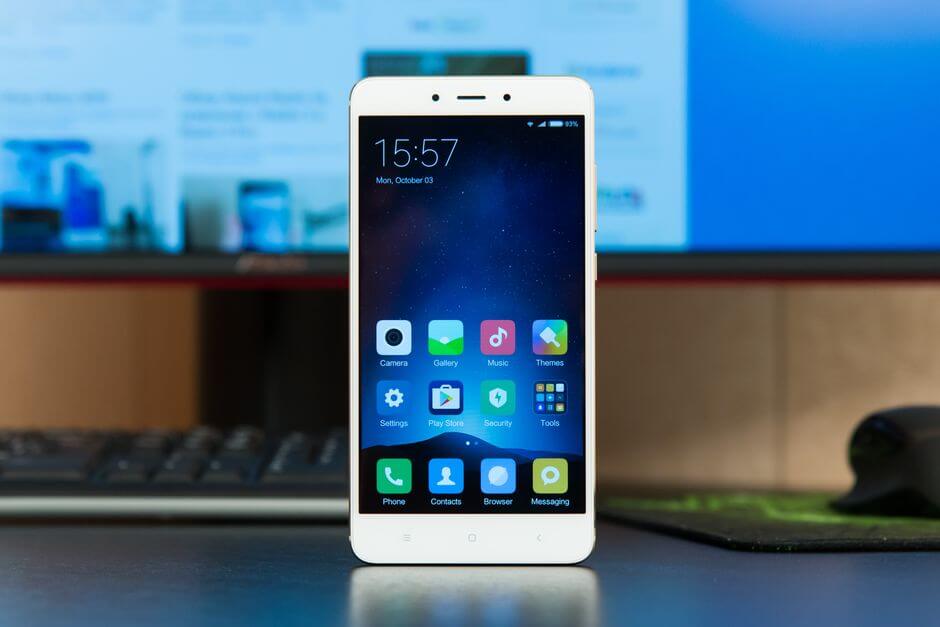
I liked the review, but the pull-out panel, as for me, began to look worse.
Artur
I tried to update over the air - it knocks out an error, so I will not see the update soon.
Ruslan Svirsky
If your firmware is not original, then, most likely, you will have to update it by hand, since this error will not disappear anywhere.
Especially if you have MiuiPro.
Ruslan Svirsky
Well, the article says that you can turn on the old mode.
Alferov Vyacheslav
What about optimization and performance versus Android? Vulkan support, optimal memory consumption available?
Ekaterina Domanyuk
Such a problem, I cannot solve it in any way. A notification window pops up in the top line, but in order to read or answer it, you need to select this application from the menu (for example, whatsapp or mail agent). How to make it open from the curtain? I hope she explained it clearly.
-
Explained clearly, but I don't know how to help you. I can only say that it shouldn't be this way.
Polygraph Sharikov
This requires these applications to work in the background. Look in the settings. Set autorun permissions.
DaySiS
I still don't understand how v8 differs from v7. Nothing new like ...
At the moment, Xiaomi company is confidently holding its position in the market. mobile phones, offering buyers a large selection of gadgets with top-end hardware, but at the same time an affordable cost. Each tablet or smartphone of the company runs on the Android OS, on top of which is superimposed branded shell MIUI. Within the framework of this article, we will analyze the features of MIUI 8 and interesting options, the existence of which you might not even know existed.
The best features of MIUI 8
- Traffic monitoring
This feature is useful for those who use mobile Internet with a limited amount of traffic per day, which is why you have to monitor its consumption. Features of MIUI firmware allow you to track traffic consumption and when approaching a user-specified value, a warning is displayed, and upon reaching it, the connection becomes unavailable.

- Energy saving
With the help of the built-in program "Power", you can increase the autonomy of the device. To do this, you can use one of the energy-saving profiles, switching between which can be set depending on the time of day, as well as the battery charge level.
- Built-in ROOT access and rights management for each application
MIUI 8 chips provide one big advantage - the presence of ROOT access already from the box. And this is very convenient, because what tricks users do not go to in order to get it on Android. It is enough to move the slider in the parameters, as you already have ROOT rights. They open up access to advanced features, including the ability to set rights for an application, autorun control, and much more.
- Blocking ads
MIUI 8 features include a built-in ad blocker that blocks ads in most apps, while on Android the user has to search and install an ad-free add-on on their own.


- Antivirus and backup system
The system is preinstalled with an antivirus that does not consume system resources in the background and adds peace of mind for personal data. But if the antivirus can still be attributed to controversial points, because viruses on Android are rare, then the backup function is of great benefit. In MIUI, it is built on top of its own virtual storage. You can create a copy of all user data, including photos, contacts, and applications.
- Removing the cache, as well as unnecessary garbage
The best MIUI 8 chips will not be considered in one article, but we will try to pay attention to all the key points. As you use your smartphone, it accumulates a lot of temporary data, remnants of already deleted applications and other garbage that takes up free space. The built-in utility will help you monitor the state of the system and remove unnecessary items.


- Recording telephone conversations
The function of recording conversations will be very useful, because due to privacy requirements, we are unlikely to find it on a pure Android. But the Chinese manufacturer went for a little trick, bypassing the prohibitions and offering users a unique opportunity to record conversations. Such chips of MIUI 8 and led to the growth of its popularity.
- Prevent accidental clicks
Chips MIUI 8 Android 6 allow you to activate the function of blocking accidental clicks when the device is in your pocket. Thus, it will not be removed from the lock against accidental contact.
- Private SMS
Sometimes it happens that you need to hide the correspondence with some users from prying eyes. And in this case, the MIUI system provides a privacy function. It is enough to add the subscriber of interest to the private list, after which all SMS notifications on his behalf will not be displayed in the general list.

Considering the interesting features of MIUI 8, this possibility cannot be bypassed. To activate it, you need to visit the settings menu, and then select the Additional / Settings / Quick Access tab. In the future, when using a smartphone, a small round icon will be displayed on its display, when pressed, 5 function keys will be displayed: home, back, menu, screenshot, lock mode. This feature is especially convenient for one-handed operation.
- Dual applications
The best features of MIUI 8 include cloning applications. Let's say you have two profiles from social network Vkontakte. In order to switch to the second account, you will have to log out of the first one. MIUI offered to solve this problem once and for all with a simple chip. To do this, you just need to create a copy of the application of interest. Thus, you can use two profiles at the same time without leaving the application. It is very easy to create a clone: Options / Copy Applications, where you need to select which program you need to clone.
- Keyboard
Even its manufacturer has endowed with some tricks that increase the comfort of working with text. So, words can be erased with a gesture from the delete key, and the cursor can be rearranged in the text with gestures on the space.
- Notification light
Most Xiaomi smartphones have a missed event indicator that you can customize in your own way. It can burn in a wide variety of colors that you yourself specify in the settings. You can set your own shades for each application, which is very convenient.
- One-handed operation
MIUI 8 features are thought out to the smallest detail. Agree, it will not be convenient to use the 5-inch flagship with one hand, but this point was taken into account when developing the shell. The function is that you can set a comfortable working area of the screen, for example, by reducing it to 4 inches.
- Screenshot by gestures
In MIUI, a screenshot can be obtained not only in a standard way- holding down the power and volume keys. There are more interesting method- swipe down from the top of the display with three fingers. You can also pull out the shutter and press the corresponding key.
- Wallpaper carousel
The system has an interesting function - every time the smartphone is unlocked, the user sees a new screensaver, which is automatically updated if there is an Internet connection.

- Second space
Secret MIUI 8 features include the ability to create a second space. The feature is enabled in the settings menu and creates a second desktop so that the user can separate home, rest and entertainment. The second space can be made absolutely confidential by setting access by fingerprint or password. The second space will contain only those data and applications that you specify in the settings. This way you will have two different interfaces.
- Long screenshots
In a recent shell update, the manufacturer added support for long screenshots. To activate them, you need to hold down the lock key and decrease the volume, while pulling the icon in the right upper corner... As a result, you will get not just a screenshot of a part of the display, but an image that covers several areas of the application or the desktop.
- The ability to flexibly customize the lock screen
It can display data on missed calls, SMS notifications, weather forecast and much more. The design and optional features of the lockscreen depend on the selected theme. If you double tap, the control panel is displayed music player, so it is possible to listen to music without even removing the device from the lock.
We have reviewed the main hidden features of MIUI 8, which distinguish the shell from the standard Android.
The Android MIUI shell from the Chinese smartphone manufacturer Xiaomi is gaining more and more popularity in Russia and the world. Moreover, this is the case when company phones are no longer loved for specifications, but for the software component. What is so special about it and why is it better than HTC's Sense or Samsung's TouchWiz? I will try to answer these questions in this short review.
Xiaomi is one of the fastest growing electronics companies. Already now in China in terms of production, it ranks second after Lenovo. The demand for the company's products is so high in the domestic market that Xiaomi is in no hurry to conquer other countries. It is for this reason that their products cannot be found in large Russian electronics stores.
According to one of the first developers of the firmware, its name is an abbreviation for Mobile Internet User Interface. Literally translated as user interface for mobile internet. But besides this, it is clarified that under MI can also mean Mission Impossible. More detailed information about the name could not be found.
Overview of visual chips MIUI 7
Visually, MIUI has collected the best from the shells of other companies. So, the idea of the desktop is taken from iOS. There is no list of applications familiar to Android. Shortcuts are immediately added to the desktop, and program icons are drawn in the style of Apple and it looks much more interesting than in a naked android.


Visualization is a separate topic. standard applications... Their interface is user-friendly and visually pleasing. It can be seen that they did it professionally and with taste. For example, in the "Weather" application, the effect of falling snow appears if it is predicted. And if you tilt the phone, then the snow will fall exactly in the direction of the tilt. And similar pleasant little things are found in everything.
![]()


The advantages of the interface can be described for a long time, although there is nothing fundamentally new in it. The secret is in the little things. Everything is thought out so well that in the complex we get a visually beautiful, convenient and fast shell.
MIUI the most customizable skin
Despite my praises of the interface, everyone has different tastes and what one likes may not like another. Indeed, many can boast of a good interface. For example, HTC's Sense or Meizu's Flyme. And here Xiaomi has a big trump card - theme customization.
MIUI has a Themes app. Through it you can download and install your favorite theme from the repository. There are both paid and free themes for every taste and color. There are a lot of them. But main feature- this is the ability to choose the design separately for each element.



The following shell components lend themselves to configuration:
- lock screen;
- lock and desktop wallpaper;
- icons;
- fonts;
- desktop curtain;
- type of contacts and messages;
- melodies.



Managing desktops and widgets
Let's start by looking at managing desktops. To enter the configuration mode, you must hold down and hold the left button of the phone.



In this mode, you can add and remove desktops. To add, scroll to the right or left and click on the plus sign. The table is removed in a similar way. Instead of a plus, click on the cross. It appears on desktops without icons. In addition, 4 settings become available at the bottom.
- Sorting.
- Widgets.
- Wallpaper.
- Effects.



Sorting allows you to bulk transfer application icons from one desktop to another. Widgets add controls and visuals to the screen. For example, the widgets have a clock, weather, player, calculator. In the "Wallpaper" item, you can select the desired picture for the background. The last item allows you to set the transition effects between desktops.
Utilities from the "Security" application
The Security application is standard for all MIUI devices and provides the user with tools to administer the operating system. It includes 6 utilities.



- Cleanup removes application cache files, ad files, and program installation files. Moreover, you can independently note what we want to clean up and what to leave.
- "Traffic" allows you to set permissions for applications to access the Internet. Permission for access to 3G and WI-Fi is set separately.
- "Blacklist" provides great opportunities for managing contacts from the black and white lists.
- "Battery" switches the battery operation to economy mode. Switching can take place both manually and in automatic mode(for example, according to the schedule).
- Antivirus scans the phone memory for viruses and threats.
- Permissions lets you set permissions and restrictions for auto-launching apps, accessing your camera, contacts, location, and more. It is difficult to overestimate the usefulness of these settings.
Basic MIUI settings
To go to the main settings of the phone, you can use the top curtain and a shortcut with the image of a gear. These settings are 80% the same on all Android devices, but the MIUI skins have some peculiarities. Let's talk about them.
The main settings in MIUI are divided into 5 blocks.
- Wireless networks.
- Accounts.
- Applications.
- Device.



In the first block, everything is standard for Android devices... In the “Personalization” block, mainly the visual components of the shell are configured - wallpapers, themes, fonts, screen brightness. There is also an interesting mode "For the elderly". It simplifies the MIUI interface as much as possible. Most of the settings are hidden and only the most necessary ones remain. The phone becomes convenient for the elderly or visually impaired.
Another distinctive MIUI setting is Kids Mode. After enabling it, set a password to exit the mode and indicate which applications are available in it. This is useful if you let the phone play for children. In children's mode, you will be sure that the child will not launch email or banking applications, but at the same time will be able to play their favorite games.



"Other settings" - contains a large submenu. Of the features, I will single out the items "One-handed operation" and "Event indicator".
- One-handed operation - function to reduce the used area of the phone. Turns on if you swipe your finger quickly from center button phone to the extreme. The feature is only available on Xiaomi. It is used for comfortable control of the phone with one hand.
- "Event indicator" - setting up LED notifications about new events. For any event, you can put a notification in one of the available colors. Even when the screen is off, you will be aware of missed calls or low battery.



From the remaining blocks, go through the "System" submenu. Here are the settings from all the pre-installed standard shell applications. For example, in the camera settings, you can set the quality of photos, focus mode, set the date on the photo, and so on.
In the last block "Device" one item from which you can find out the phone model, the version of android and MIUI, as well as the technical characteristics of the device.



What is the secret of MIUI success
Smartphones from Xiaomi have long established themselves as high-quality gadgets at an affordable price, but the main reason for their popularity is the proprietary MIUI shell. Our oriental friends did a really high quality software, which compares favorably with the "naked" android with a beautiful and user-friendly interface, flexible settings and thought out to the smallest detail utilities.
The big plus of MIUI is technical support... The firmware is updated weekly. At the same time, updates are released for the entire range of smartphone models of the company, and not only for new ones (as other companies like to do). They fix bugs, add new and improve existing functionality. Moreover,
In Russia, products from Xiaomi are not officially presented, but you can order a phone from China through AliExpress, and then reflash to the Russian version. For those who do not want to wait long and fiddle with firmware, I can recommend an online store with a large selection of original gadgets and good prices.
The review used the Redmi 2 phone with MIUI 7 on board.
Surely it is difficult for you to imagine your life without newfangled technologies, especially without a smartphone. He has become an integral part of our life - a thing that is not parted with, even when they go to bed. Therefore, it is not surprising that when choosing a smartphone, we want it to be not only fashionable, but also convenient. Now pay attention to themselves Xiaomi smartphones, or rather, their new firmware Miui 8. It came out quite recently, but has already managed to decently please users who did not expect that the OS could be so functional. Not surprising, considering how many shortcomings there were in previous versions.
The first thing that catches your eye when looking at the shell is the brighter, luscious design. Also, the miui 8 interface has changed its color, becoming more saturated, thanks to which young people will be delighted with it. But it all started with the simplest CyanogenMod, and now users have a full, functional operating system which is suitable for both phones and tablets. Moreover, it can be used not only on Xiaomi parent devices, but also on equipment from other manufacturers, therefore such attention to this OS is not surprising.
Overview Miui firmware 8 starts with its design, because it has undergone significant changes, which immediately catches the eye of the user who starts using it for the first time. It somewhat resembles the standard design of Android 6.0, but still has a number of features that will allow you to switch to this firmware without significant discomfort. Users even point out that it is more convenient to use the device with MIUI.

We tried to highlight several features of the new Miui 8:
- The firmware was able to get rid of the blur effect that bothered users;
- The developers decided to abandon the incomprehensible bright, but some kind of "dirty" colors. For example, blue became the main color, which looks much nicer than orange;
- Application icons have changed, thanks to which you can find desired function it has become much easier, since the search is intuitive;
- The buttons of the lower bar were made more graceful and thin, thanks to which the interface installed on the eighth firmware looks more noble;
- Changes affected the image of the clock on the lock screen. The decision to execute them in the original Mi Lanting font was successful, because the gadget began to look more stylish without taking up half of the screen.
So the beauty of Miui 8 pleasantly surprises the user. The result is a symbiosis of iOS and Android, while maintaining functionality with external grace. Just what the younger generation needs. For example, from iOS, the developers took the display on the screen like this useful information, like the weather, the current date, missed messages, and if you look in the settings, you can even display data on the Internet speed on the screen.
But from Android, the Miui 8 user got the opportunity to change and customize themes for themselves, including animation that looks great on any smartphone.
Peculiarities
The company took the time to develop various innovations, which were made not just to change something, but really make the OS more reliable, functional and affordable. Compared to the seventh version of the firmware, the eighth is very different from its earlier counterparts, and this is clearly noticeable.

The most notable changes were in the settings of Miui 8. In addition, we added several functions for the manager of active applications. For example, if you need to protect one of the installed applications from cleaning or any other system actions, then you can pull it down. In the same way, you can look at the details of the application, check if there are any glitches and other failures in it. It is very convenient if there is a suspicion of a system failure. Look detailed review MIUI 8 in the video below.
Sound settings
The new Miui 8 firmware allows for more convenient sound settings. It's just that the firmware has a built-in equalizer, which in the "Sound and vibration" item allows you to improve the sound quality, which is adjusted by the user. In addition, special attention should be paid to the item "Improving Mi Sound". Its function is to select additional presets that will differ for each specific headset. After all, the sound in conventional in-ear headphones and powerful on-ear headphones requires different settings in order for the sound to turn out really good.

Data protection
Data protection is another pleasant bonus that made us happy latest version Miui. You can protect literally everything - from pictures to single messages. Now you can put passwords for each menu item in Miui 8, and each one has its own. The main thing then is not to get confused in them yourself. For those with children, the child mode can be set and the child may not be able to use some of the functions.
And if there is a risk of losing your phone, you can create a clone of the programs that you use most often in the "Dual Application" menu. This feature allows you to work from a different account if you need urgent access.

Other features
The "Second Space" function is a pleasant and functional novelty from Miui 8, which allows you to divide the memory of your smartphone or tablet into two parts. Each of them will have their own access rights, so that no one else can enter the protected space. In addition, this function allows you to almost completely change the information field by dividing one device into two completely different ones.

And of course, the literacy of the construction of Miui points is striking. The menu has become much more comfortable, and now it is more convenient to rebuild applications. The design in many ways resembles the standard Android, although, as already mentioned, not without external differences... Whereas the functional differences are really strong. For example, at the top of the screen, you can perform a global search for settings without going into the menu itself. Incredibly convenient and time-saving.
Power and energy saving
Naturally, every smartphone owner is familiar with an annoying signal that signals that the device's battery is low. Unfortunately, with active use of the device, the battery is discharged extremely quickly. Sometimes it is not enough even for a day, and there is simply nowhere to charge. On the Miui 8 firmware, the developers have tried to minimize the battery consumption. It is worth saying that they did it well, but still a lot depends on your activity. Traditionally, some applications consume more battery than others, so you need to be careful with them.

So, have you managed to optimize and rationalize the nutritional process? The developers have spent a lot of time and effort on solving this problem, and it seems that they have achieved a positive result - at least as soon as the Miui 8 firmware came out, the review showed it.
Of course, the capabilities of the phone's battery have not changed, but they have become more thoughtfully distributed among applications, and, if necessary, unnecessary applications can be turned off, thereby saving power.
Here are some interesting innovations from Miui 8:
- When the phone or tablet is charging, a report appears on the notification panel of how much time is left until the end of the process;
- You can view all power indicators, including the level of battery wear, through "Security"> "Power";
- All management of power settings is collected in one place: power saving on schedule, monitoring of battery usage and much more;
- If the battery overheats above the specified mark, you can turn on the automatic power saving mode, or simply force the device to show a notification about such an incident.
In addition, the shell strikes with a special energy saving mode. This program is a feature that distinguishes the eighth version of the firmware from the previous one. In fact, this mode can disable all programs that you are not currently using. In order not to turn off especially important applications, it is advisable to set restrictions on those functions that you want to continue working. Synchronization is most often turned off, automatic Miui update and other programs, without which the system will be able to work without damage to itself.
Differences between MIUI 7 and 8
Naturally, the shells are similar, although there are a number of minor, but important differences between them, which I would like to consider in more detail.

- Access to the second space can be opened using fingerprints or a password;
- The alarm can be set separately in two spaces;
- The process of management and operation of some applications can be carried out in landscape mode, but the main menu remains unchanged;
- By submitting photos to the gallery, they are automatically improved, the tints become better, etc., but if this function is not needed by the user, a problem arises, since it cannot be turned off.
Here are just the main differences between the Miui 8 firmware and previous version... You can get to know them better in the video below.
Today at 9:00 Moscow time, Xiaomi held a really interesting presentation - MAX, at which a new version of MIUI, a unique shell from Xiaomi, was presented. The developers reported that as many as 200 million people use the shell - a really large number. However, it should be admitted that the main users are still the Chinese, since Xiaomi, for the most part, is still working only for the domestic market. This shell is community-OS, that is, it is developed in close cooperation with users. The likelihood that your idea will be implemented is very high. And so, what's new awaits us in new version MIUI?
The first thing that the Chinese showed at their presentation was the redesign of most of the system applications... Colors have become more material, objects have acquired volume. Now the shell looks more close to the classic Android 6, but it's still too early to draw conclusions.
So, for example, the calendar got more muted colors during the graphic upgrade, which will please the majority of users. The status bar is now absolutely not separated from the screen - if previously there were color mismatches or dividing lines, then in the new MIUI version Xiaomi decided to completely abandon this in favor of a single screen color. It certainly looks prettier.
Then a completely redesigned status bar was shown at the presentation, which, admittedly, looks amazing. If earlier it was a rather meager spectacle of a huge heap of switches, now everything is sparkling with colors. Labels quick setup acquired a beautiful bluish color, the status bar header now contains images (which, possibly, will change in accordance with the current weather and season - this information not officially confirmed yet), which are reminiscent of Google Now, which at one time caused a flurry of endorsements from designers. From there, you can get quick access to the search for applications, as well as any information in the Chinese search engine. Unfortunately, this function is not relevant for our region. Let me remind you that quick search has been introduced since MIUI 7. Notifications are now on the same screen with switches - you don't have to scroll back and forth to change the brightness and read the message. Also, the notifications got a material design of the cards, and the effects look pretty nice.
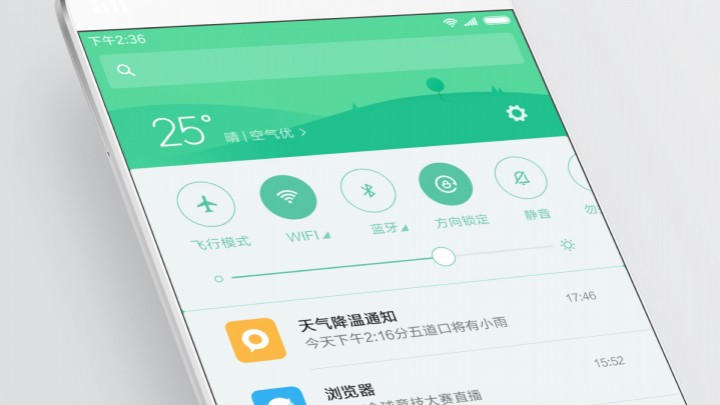
In general, the design of all applications has changed for the better.
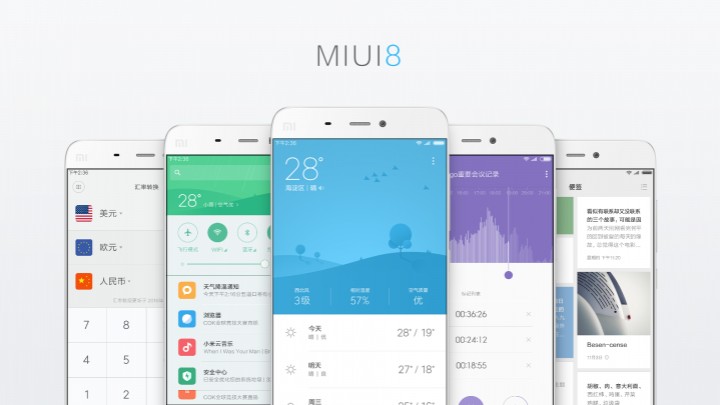
We see more material buttons, more animated details and effects, as well as various beautiful images in the same color scheme, such as in the Weather application, Phone, and also in the status bar.

Also, in the new update MIUI has worked on fonts, stating that "the fonts on the old versions are terrible, and only now we realized it." They have made all the fonts even in the center to avoid band exits and awkward jumps. Although it is not very interesting for us, but the English letters, as well as numbers, began to look really more beautiful and neat
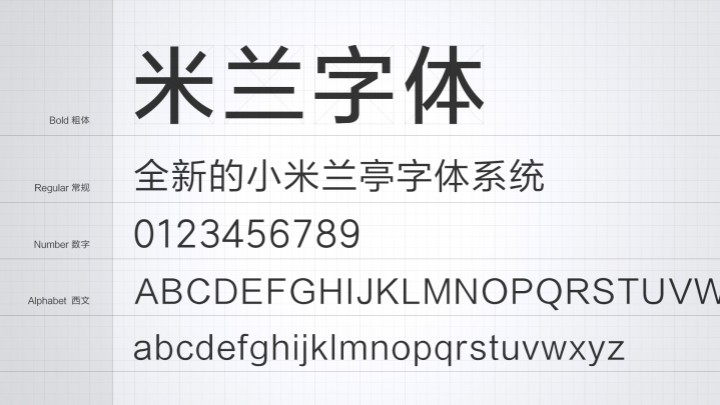
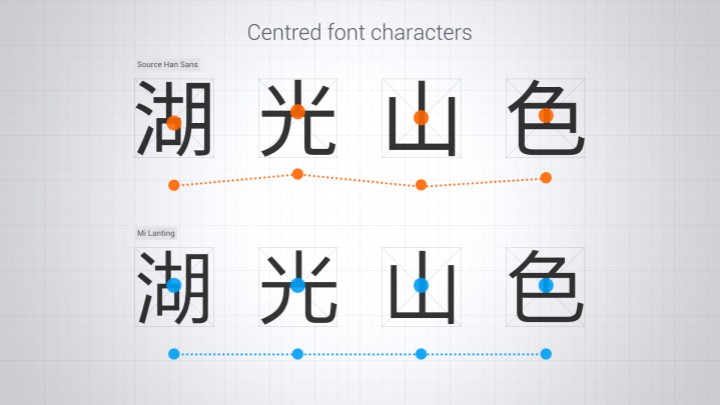
Also, Xiaomi decided to develop its technology for changing images on your wallpaper. Now, instead of one supplier of pictures, Xiaomi has found itself as many as 50 partners who are ready to change your wallpaper 12 times a day. Of course, for some it may seem strange, but someone likes the variety on their device. The user can show their preferences by like or minus the current wallpaper. Then the system will automatically select wallpapers that are interesting for you. For example, if you like Chinese women on your wallpaper, get ready for a swim of Asian women in your phone without interruption - these wallpapers will really last for a long time.
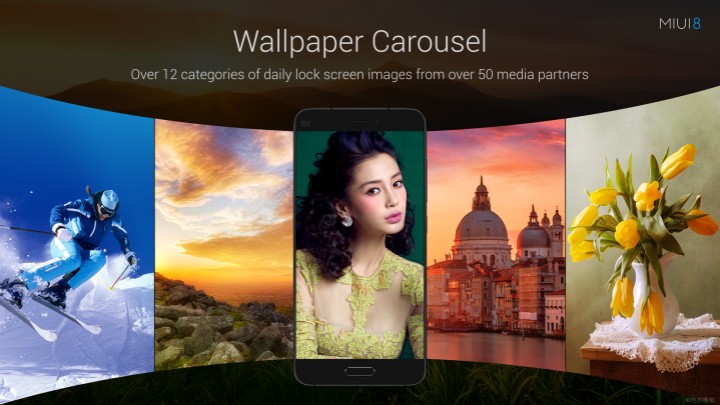
But where they really did their best is in the Gallery app. Little of. that it began to look an order of magnitude prettier than before, and also acquired a bunch of new functions.
Xiaomi said that they have come up with a better way to cache images, and now photos will be processed much faster and with less power of your smartphone's video accelerator. Let me remind you that the problem of caching previews annoys quite a lot, since such previews "eat up" a couple of gigabytes of so much desired memory on your device.
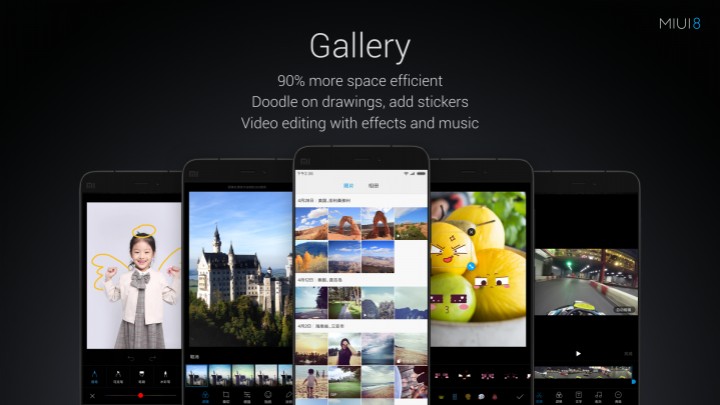
Now you can edit the video by trimming it, changing sounds, adding music, setting filters, and a lot of others interesting features, which not every computer video editor can boast of.

You can also add stickers to your photos to make them more fun before sending them to your friends. By the way, about the function quick editing just before shipping, read a little below.
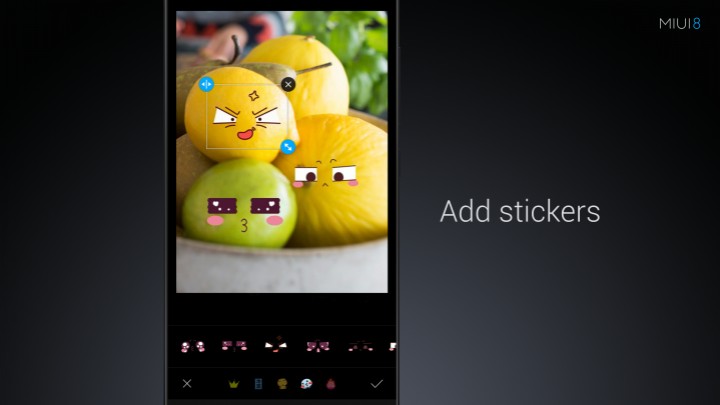
Now you can draw on the photo "doodles", that is, hand-drawn elements. For example, to add wings to your daughter, like an angel, as shown in the presentation, or draw a crown on your dog's head. In general, you can paint whatever you want. Just don't do the same creativity as on fences, the Chinese did not try for this;) You can change the type of brush, color and thickness of the pen.
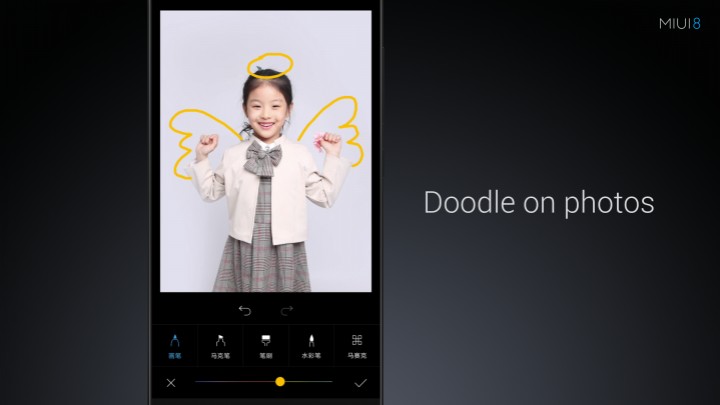
It has become more convenient to select many photos to send - when you want to select a photo to send to a friend, a window with check marks immediately appears, in which you can select one or several photos without long pressing.

Now about the function of quick editing of a photo before sending: you can configure so that when sending a photo to other applications, the gallery either performs certain transformations itself, or opens the photo editing screen in front of you. And then there is enough imagination for that. Nothing will limit you.

Then Xiaomi showed the new capabilities of the scanner on its devices. Among the interesting ones, it can be noted to help in solving various kinds of problems with a step-by-step solution. It should be noted that this is not new technology for example, the Cymath website has been offering such a solution for a long time, and it's absolutely free. Here, the program will most likely work only for the Chinese and users of the CIS, it will be useless.

Then a rather interesting technology for fast product search was shown: you take a photo, for example, of a plush toy with the Xiaomi logo and press a special button. The program thinks a little and shows you ... where you can buy this product, as well as at what price. Unfortunately, most likely this function will also be relevant only for the Chinese, although it is still unclear which store is used by Xiaomi to find suitable products.

MIUI also learned how to search for products in online stores by their barcode (I remind you that this function is also not new, and there are several solutions in Google Play and the App Store for those who want to try this function without waiting for MIUI 8.

You can now quickly read and create QR codes: Xiaomi says it is now very fast and easy. By the way, usually QR scanners that are preinstalled are basically distinguished by their slowness in reading the code. But again, there are programs on Google Play that do this at the speed of light.

The calculator also received a big update, where a new design was added, additional panel for scientists, translation of systems of calculation and currency. This update should appeal to those who often work with numbers or money.

The Notes application has also received an interesting update: templates for writing really beautiful notes and postcards that you can send to your friends have been added there. You can also take a screenshot of a full page of notes or a full web page using special buttons: what this combination will be has not yet been announced.

Now it will be easier for the user to navigate their old notes thanks to the new card preview of your notes upon entering the application.

You can also protect your notes from prying eyes by using either a password or your fingerprint to unlock access to your notes.
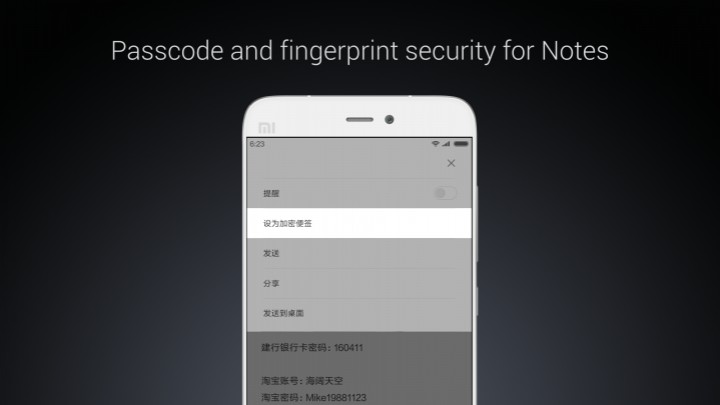
Now you can no longer be afraid of spam and flooding in your messages: the new filter will warn you about incoming spam and you will decide what to do with it now and in the future: you can disable protection, you can delete all messages that the system considers spam in automatic mode, or you can leave all spam messages for your collection.

Finally, Xiaomi has implemented a full-fledged task switcher with a choice of windows in applications. Now it is much more convenient, for example, to access a specific tab Google chrome from the taskbar. It's fast and beautiful.

MIUI continues to monitor the consumption of your battery and now allows you to monitor the launch of applications at system startup: you can permanently remove objects you do not need from startup.
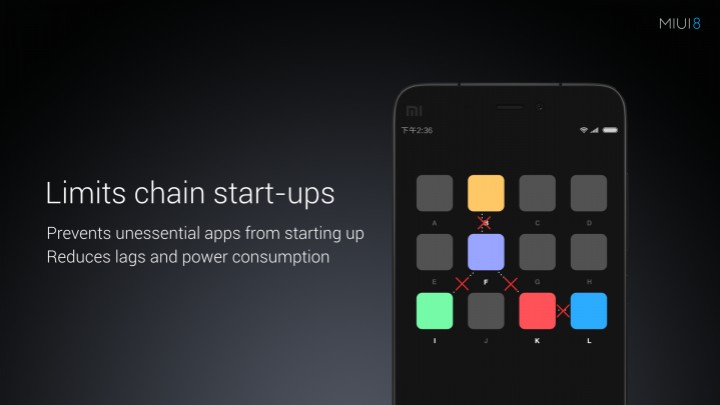
The battery saving algorithm has also been improved - now the system will turn off all background processes, synchronization and backups when your charge tends to zero.

Unfortunately, the update will not be available as soon as we would like, but you will not have to wait long either: registration for beta testing will open on May 16, testers will receive the first firmware versions on June 1, and on June 17 the firmware will be distributed to all devices on which the firmware marked "Developer" is installed. Most likely, a stable build for all users will be released in a few weeks after that.

